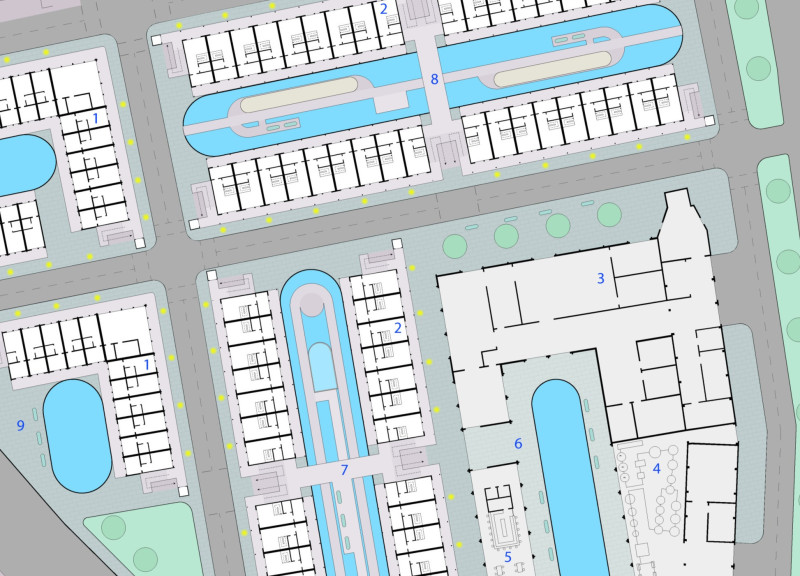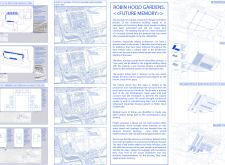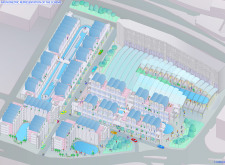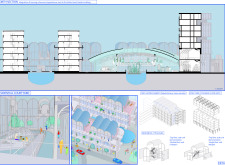5 key facts about this project
The design focuses on the London Western Dock and West India Dock, setting a tone that integrates historical significance with present-day needs. Located within a context rich in trade history, the plan promotes community interaction, sustainability, and mixed-use spaces. The Pennington Street warehouse is an essential part of this vision, connecting the past of the area with the future.
Historical Context
These docks were once crucial for importing a wide range of goods like ivory, spices, coffee, and wool. This background serves as a foundation for the architectural narrative. By referencing the historical uses of the site, the design creates a link between what was and what will be, ensuring the development honors the area’s legacy.
Residential Design
A variety of housing types have been incorporated to encourage community engagement. The project includes terraced homes and tenements, addressing urban density while providing several living options. It features both double floor units with detailed layouts and single floor units with block designs. This diversity supports different lifestyles, contributing to a sense of belonging among those who will call this area home.
Community Engagement
The design incorporates carefully planned pedestrian pathways and shared spaces, aiming to foster social interaction. Open areas for gathering are included to address previous challenges in creating community cohesion, seen in projects like Robin Hood Gardens. By prioritizing connectivity, the plan hopes to cultivate a lively neighborhood where residents can form relationships and become part of a unified community.
Mixed-Use Development
A multi-functional manufacturing hub is integrated into the plan, combining urban farming, a brewery, workshops, and creative studios. This not only provides job opportunities but also mixes residential and commercial functions within one space. By blending different uses, the design creates a lively environment that enhances the overall urban experience while promoting sustainable practices.
The design integrates water features and green areas to demonstrate a commitment to sustainability. This arrangement is intended to align the built environment with the natural context of the docklands, allowing the new development to remain connected to its historical roots.






















































